A short illustrated history of every woman’s favorite wardrobe item – the little black dress. Who invented it, who made it popular.
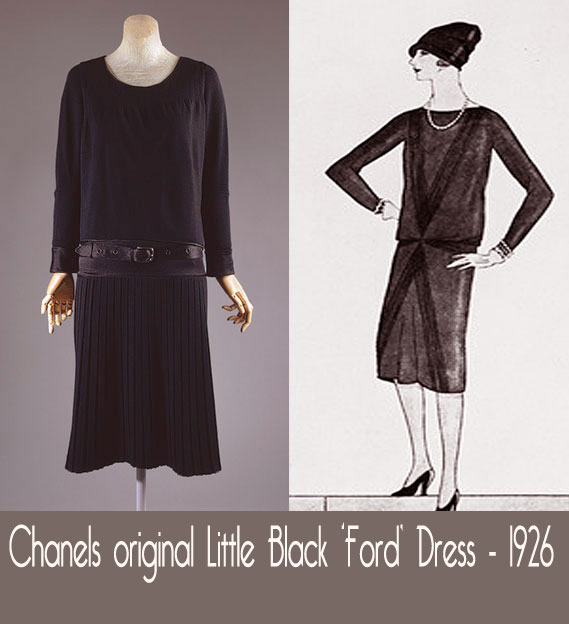
That Iconic item in every woman’s wardrobe
A big fan of single neutral colors, Coco Chanel was really just pleasing herself with this number. In mourning mode after the death of her lover in 1915 ; Chanel’s tendency towards black naturally crept in to her designs.
Paul Poiret famously asked Chanel once “For whom are you in mourning, Mademoiselle?” Chanels reply? “For you, Monsieur!”
It started its journey worldwide with Vogue publishing her creation in 1926 – October 1st to be exact! It simple, calf length, straight line inspired Vogue to call it Chanel’s Ford Dress , after the Model T motor car.
Its flattering silhouette suited many body types and it epitomized the Parisian economy with style which was fast replacing the more exotic looks of the likes of Poiret. However in the more affluent USA, in the late 1920s, Chanels casual dresses were not particularly popular among the Fifth Avenue set of Vogue readers, who eagerly scanned the magazines monthly reviews of the latest ‘ hot’ gowns from the likes of Jeanne Paquin, Madeline Voinnet and Jacques Doucet.
Chanel’s Little Black ‘Day Dress’ – 1920s.
It was a small print which appeared in the Vogue issue of that October in 1926.
The exact description given by Vogue was as follows: “Chanel’s Ford Dress” the frock that all the world will wear is model 817 of black crepe de chine. The bodice blouses slightly at the front and sides and has a tight bolero at the back. Especially chic is the arrangement of tiny tucks which cross in front. Imported by Saks.”
That was it, no gushing praise, no trumpets blaring, no ‘Eureka’ moment at all.
Note that they did say ‘ all the world will wear’. The dress drew it’s origins of course from the increasingly popular flapper style and it is still debatable if the LBD was in fact ‘invented’ by Chanel. But certainly her penchant for simplicity was hugely influential.
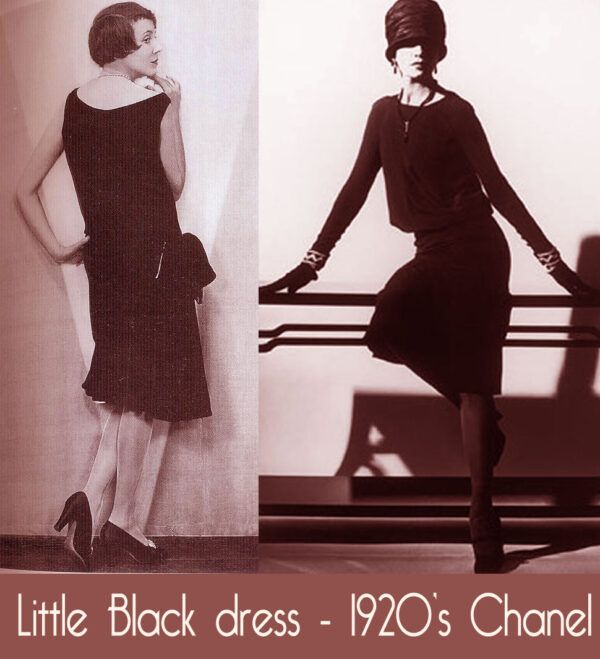
The Screen Debut of the LBD
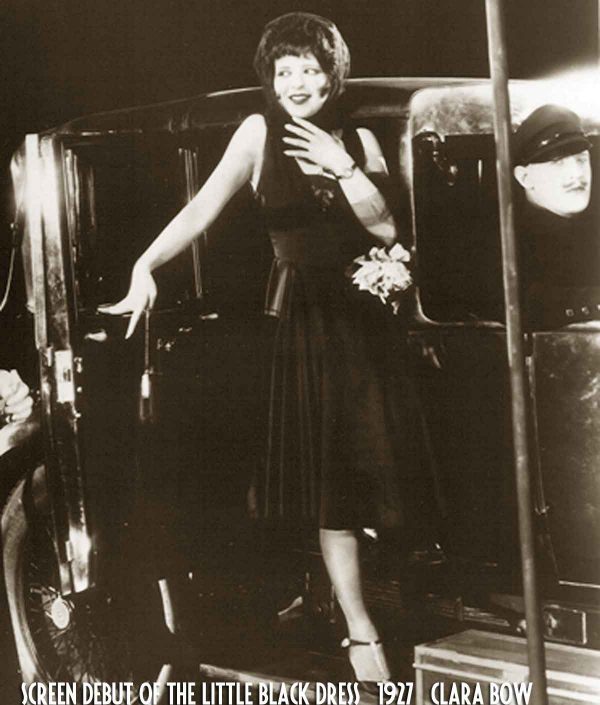
It can’t be underestimated the impact that the Clara Bow movie IT (1927) had on the fashion world. The iconic scene when Bow takes a scissors to her work frock – turns it in to a smart little black number, and presents it to us all as she climbs out of a car, heralded the true beginning of the popularity of the little black dress. It was designed incidentally by Travis Banton. An early example of the impact of Hollywood on women’s fashion.
Little Black Dress – 1930s
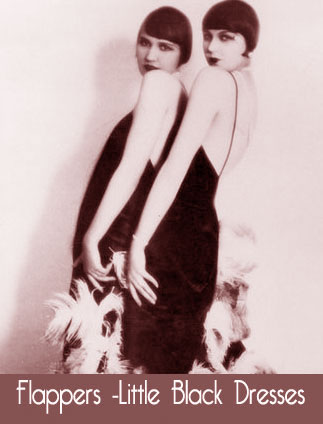
As the 1930s arrived, other designers, notably Nettie Rosenstein, and Elsa Schiaparelli began to design ‘ little black dresses’ and the outfit became a standard staple for simple evening wear.

Hollywood secured its iconic status in the 1930’s through the cartoon character Betty Boop, and while Bettys dress remained naughtily well above the knee, the 1930s conservative look brought evening dress hems down to the calf again. However the ‘gamine’ silhouette – so popular in the 1920s, was replaced with more natural feminine flowing curves .
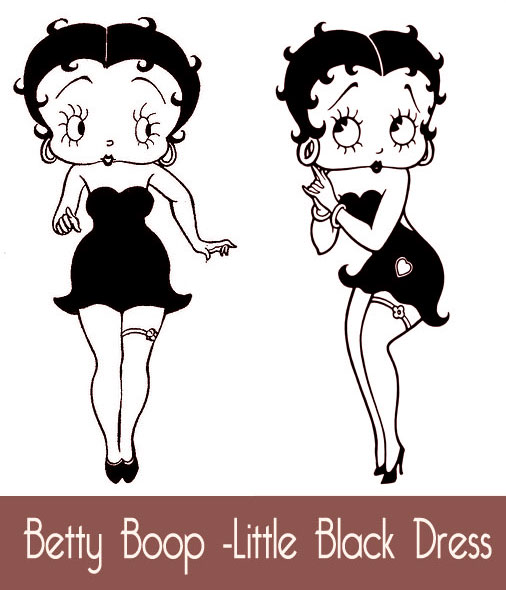
Little Black Dress – 1940s and 1950’s.
The rationing of fabrics in the 1940s made sure that the ‘little’ remained in the ‘black dress’. What made the LBD so popular was its ease of accessorizing.
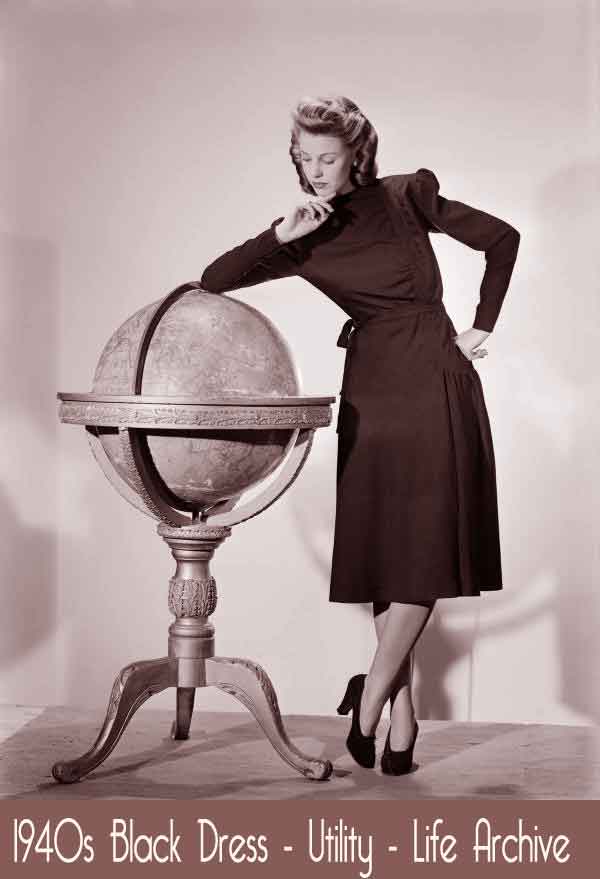
Its simple silhouette and neutral black color, made it the perfect foundation for several outfits.While the standard daily wear certainly in the US and more so in the UK was the ‘utility suit’ – only women of more means could really afford a separate evening frock. This image from Life shows a standard black day frock with knee length hem which may have sufficed as an evening outfit as well when worn with an appropriate hat. After the war, more flamboyant silhouettes changed the little black dress to suit the fashion era.
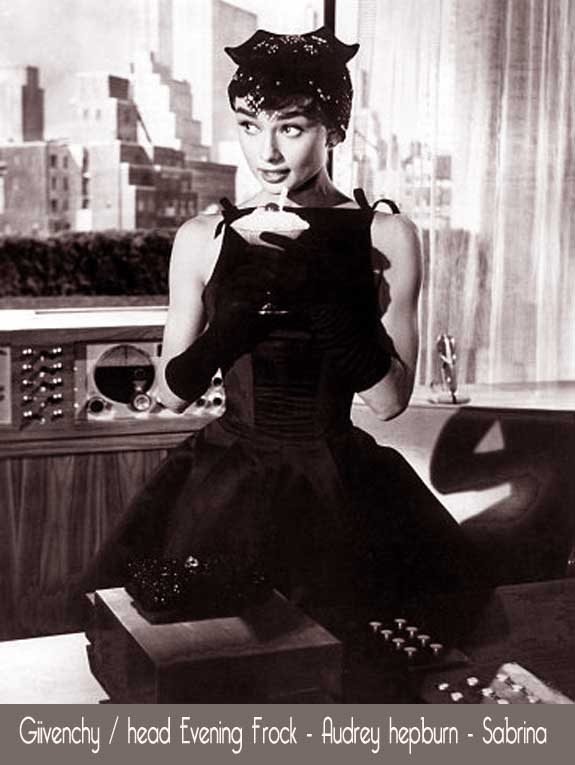
The Edith Head designed but Hubert Givenchy inspired full skirt and nipped waist black evening dress, as beautifully worn by Audrey Hepburn in Sabrina, typified the new post war glamour of the LBD. Despite these adoptions of the Dior influenced styles, the dresses originator – Coco Chanel stuck firmly to the idea of the LBD being a basic pull on frock with a simple line that fitted in with any fashion era.
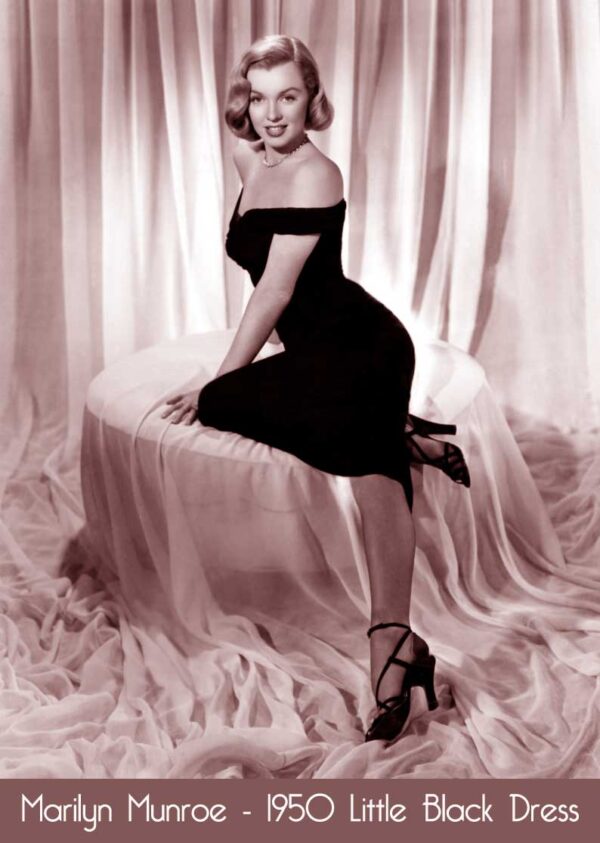
Little Black Dress – 1960s.
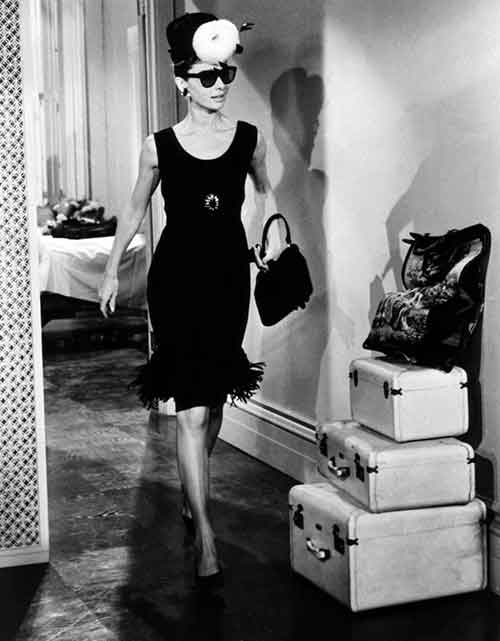
In Breakfast at Tiffanys, Audrey Hepburn teams up again with Hubert De Givenchy who designed several little black dresses for her. The 1960s celebrated the 1920s era, with short hair, shorter skirts and the gamine looks of Twiggy and Jean Shrimpton. Pop stars like Jane Birkin brought the LBD to new hem heights. In 1964 the fledgling Eurovision Song contest featured Anneke Grönloh wearing a stunning little black mini dress.

The simplicity of the LBD or ‘Little Black Dress’ reached its pinnacle in this decade and has remained a must have outfit in any woman’s wardrobe ever since.
That’s all !
©Glamourdaze.com

Thanks for that little summary, everyone loves an LBD!